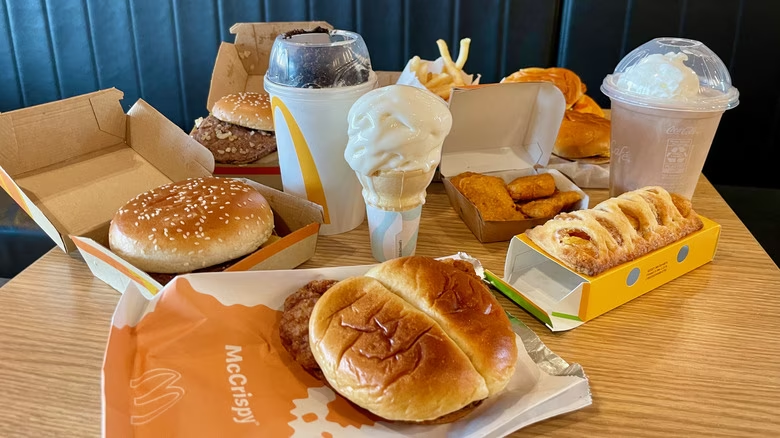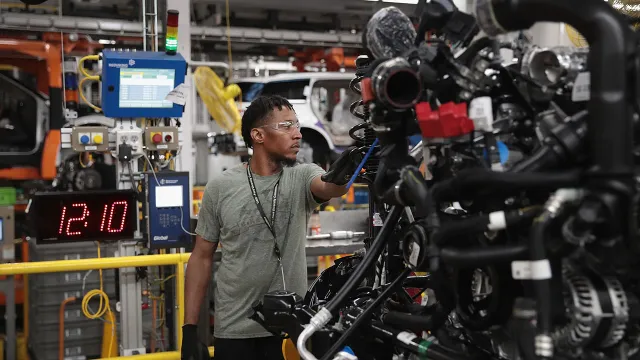Consumers are pushing back as menu prices rise at McDonald’s, Taco Bell, and other popular chains

Earlier this year, Allen Watson, a startup cofounder from Myrtle Beach, South Carolina, decided to stop indulging in his favorite McDonald’s meal: the biscuits-and-gravy combo with a sausage patty and Diet Coke. The $11 price tag for the meal on a January day finally gave him pause.
“That’s crazy to me, because the sit-down restaurants around here are almost the same price,” Watson says. Though he could afford it, he felt “price gouged” and didn’t like seeing high-level executives profiting while frontline workers were underpaid.
“I think it’s just a perception thing i guess,” Watson says. “I perceive it to be too expensive, and that’s why I’ve altered my behavior.” His perspective echoes a broader shift in consumer sentiment, particularly in the fast-food industry, as inflation continues to push prices higher. The cost of a McDonald’s medium fries has jumped 44% over the past five years, leading many consumers to reconsider if a weekly trip to Taco Bell, Wendy’s, or KFC is still worth it.
For brands built on perceived value, such price hikes could undermine the core of their identity. A survey by Fast Company and Harris Poll in June revealed that convenience and affordability were the top reasons people ordered from fast food, with taste coming in third. Without their reputation for being fast and cheap, what is fast food?
This concern is reflected in McDonald’s CEO Chris Kempczinski’s remarks during the company’s April earnings call. He admitted that industry-wide traffic in key markets was stagnant or declining and that rising costs were making customers more selective.

Despite this, when asked whether McDonald’s should offer more low-cost deals, he asserted that the company already provided the best value. The key, he suggested, was better messaging. McDonald’s extensive network of franchised restaurants—the “system” as the company calls it—needed to unite behind a message that McDonald’s still offers value despite rising prices.
Kempczinski emphasized the need for a “strong national value proposition.” It’s likely that Watson from Myrtle Beach would agree—although his version of a strong value proposition might involve a less expensive breakfast. Perhaps it requires a certain level of corporate detachment to view inflation as a challenge solvable with marketing savvy.
Yet, McDonald’s has weathered tougher storms, such as cultural criticisms over the health impacts of fast food in the early 2000s, including from Super Size Me and Fast Food Nation, and emerged even more central to American culture.
However, this cachet hasn’t been enough to shield fast-food chains from the harsh realities of rising prices. According to an April LendingTree survey, 62% of U.S. consumers reported eating less fast food due to high prices. Food prices surged by 20% from 2021 to 2024, and inflation reached its highest point in a generation, peaking at 8% in 2022. This forced restaurant owners into a tough spot—justifying price hikes to customers, including younger generations who have never seen such steep increases.
“The industry is really nervous around menu price inflation,” says Darren Tristano, head of the research firm Foodservice Results. Even though eating-out costs have increased across the board, it’s particularly noticeable in fast food, he notes. “You’re used to getting that $4 burger—and now you’re seeing it closer to $6.”
In response, McDonald’s USA president Joe Erlinger took to a blog post to address some of the viral claims about exorbitant price hikes, such as a 95.5% increase in McNuggets. He argued that these examples were “poorly sourced” and “inaccurate.” Yet, even if viral instances like an $18 Big Mac meal are extreme, the real price increases—such as a 21% jump in Big Mac prices over five years—are still substantial enough to catch consumers’ attention.
In today’s “vibes economy,” managing consumer expectations is vital, and the widespread discussions on Reddit and TikTok about rising fast-food prices suggest brands are losing control of the narrative.
This shift has raised concerns from experts like Frances Fleming-Milici, a researcher at UConn’s Rudd Center for Food Policy and Health. She notes that fast-food companies often market less healthy options—such as burgers, fries, and sodas—more heavily, which raises concerns about attracting cost-conscious consumers. “The fear is that there are going to be more promotions to attract these cost conscious consumers,” Fleming-Milici says.
Indeed, summer promotions saw fast-food brands competing fiercely on limited-time meal deals, with chains like Wendy’s and McDonald’s offering high-calorie options at low prices. Wendy’s, for example, gave away free Frosties with its Biggie Bag, while McDonald’s introduced a McDouble Meal Deal with more than half a day’s worth of fat in one sitting.

Despite the obvious health risks, aggressively low-cost deals are not seen as a long-term solution. During McDonald’s earnings call in late July, Kempczinski acknowledged that customer selectiveness had “deepened and broadened.” When asked for comment, McDonald’s pointed to the positive results of its $5 Meal Deal promotion, but some industry experts warn that such price cuts could lead to a “race to the bottom.” “You can go low and lose money,” Tristano warns. “If we’re fighting to see who can offer the lowest price on fast food industry, that chain is going to wind up being a loser in that battle.”
While parent companies of major fast-food chains like McDonald’s remain profitable (with McDonald’s netting $8.47 billion in net income last year), they face inflationary pressures at every level of the supply chain, from food costs to labor, rent, and insurance. Scott Rodrick, who owns 11 McDonald’s franchises in Northern California, shared in June that some of his locations were seeing declines in foot traffic and per-customer spending as costs mounted. “There has been no time in my 30 years in business where I have been so pressured to grow sales and keep the costs in line,” he said.
Rodrick’s family has operated McDonald’s franchises for over 50 years, but the pressures of the industry have intensified, especially in California. He’s been vocal about his opposition to the state’s $20-an-hour wage law for fast-food workers, calling it “extraordinary” and “unprecedented.” He doesn’t believe the industry can solve its issues by slashing prices. “Value is the combination of price plus experience,” he says. “I don’t sell gasoline. I have a business where I can quite easily price myself out of existence.”
This grim outlook from a franchise owner contrasts sharply with the corporate optimism coming from McDonald’s headquarters in Chicago. How do you convince consumers that the price of a Big Mac is still worth it?
Two days after speaking with Rodrick, it was announced that his McDonald’s location at San Francisco’s Stonestown Galleria would close for good after 30 years of operation.
Consumer behavior is unpredictable, and some experts suggest the fast-food industry will bounce back once people adjust to the new pricing reality. “They see higher prices and tend to back off, but then they return to buying the things they want,” Tristano explains.
Perhaps this is why fast-food chains invest heavily in marketing—hoping to ward off the unsettling notion that each consumer has their own breaking point. For Allen Watson, his breaking point arrived one day in January in Myrtle Beach, when the cost of his usual combo meal became just too much. “I made the decision right then and there,” he says. “That’s the last one I’m ever going to have.”



